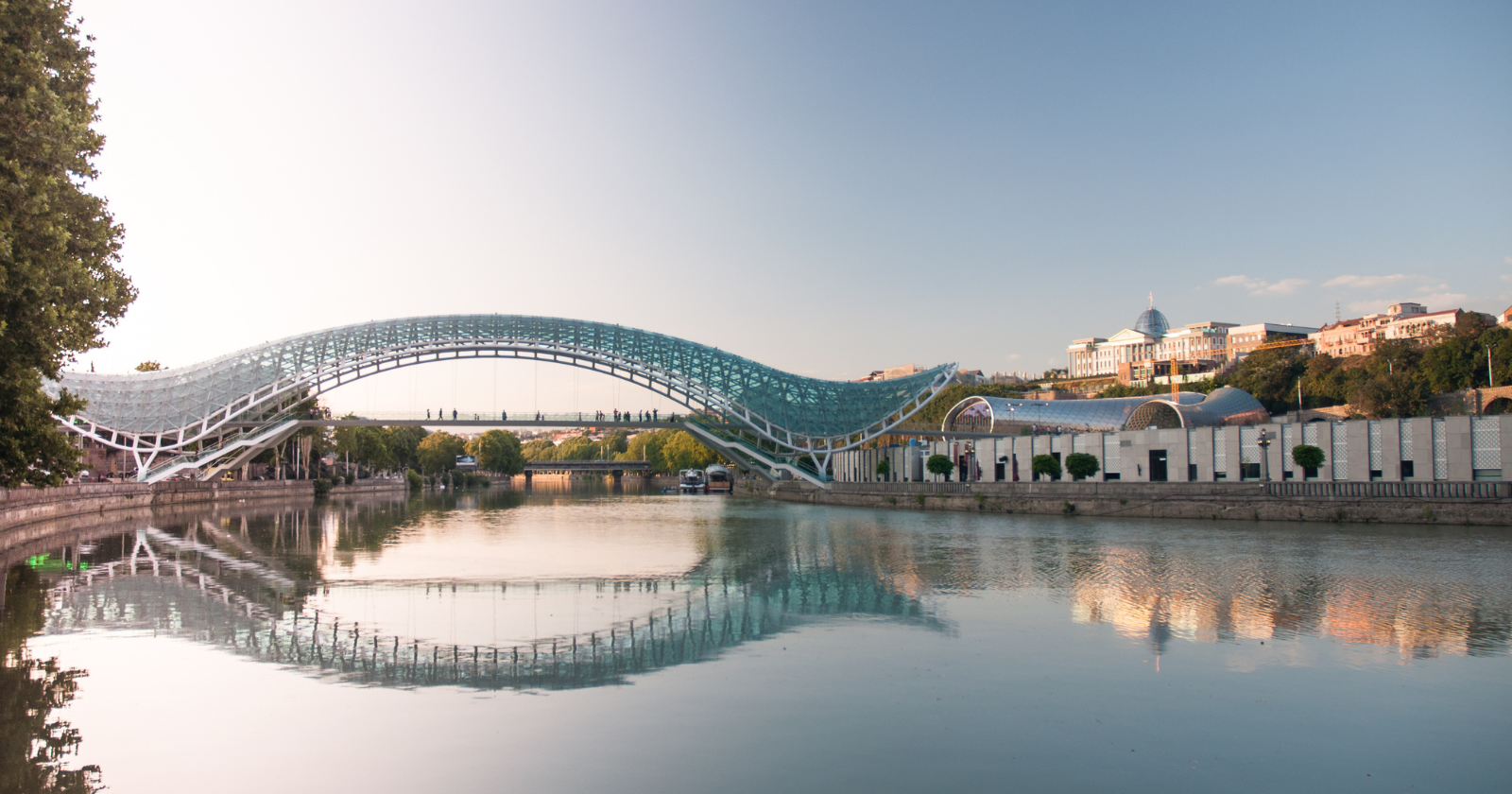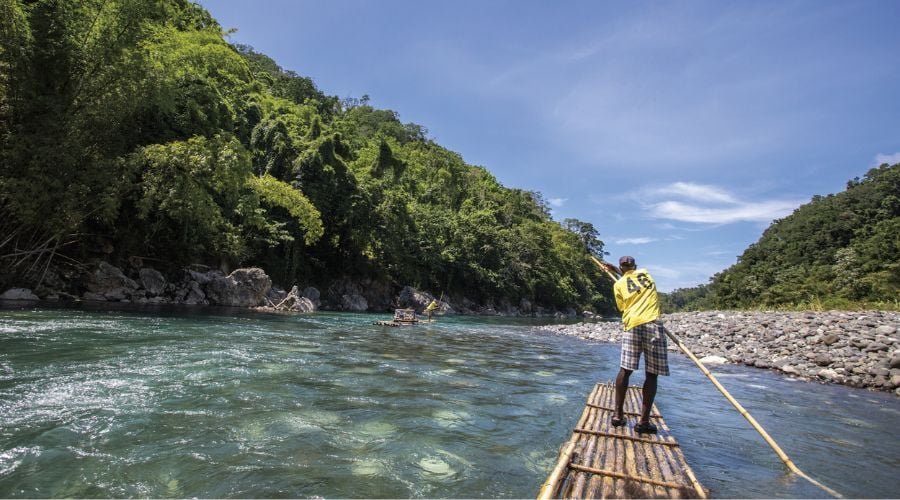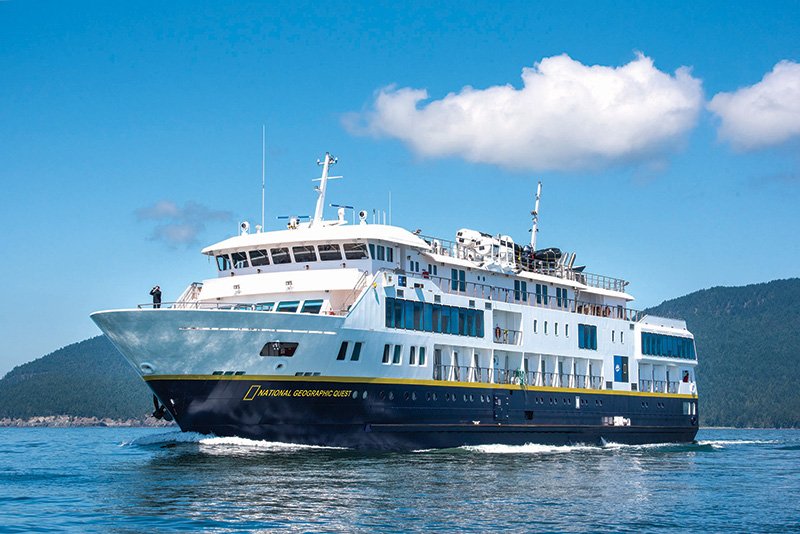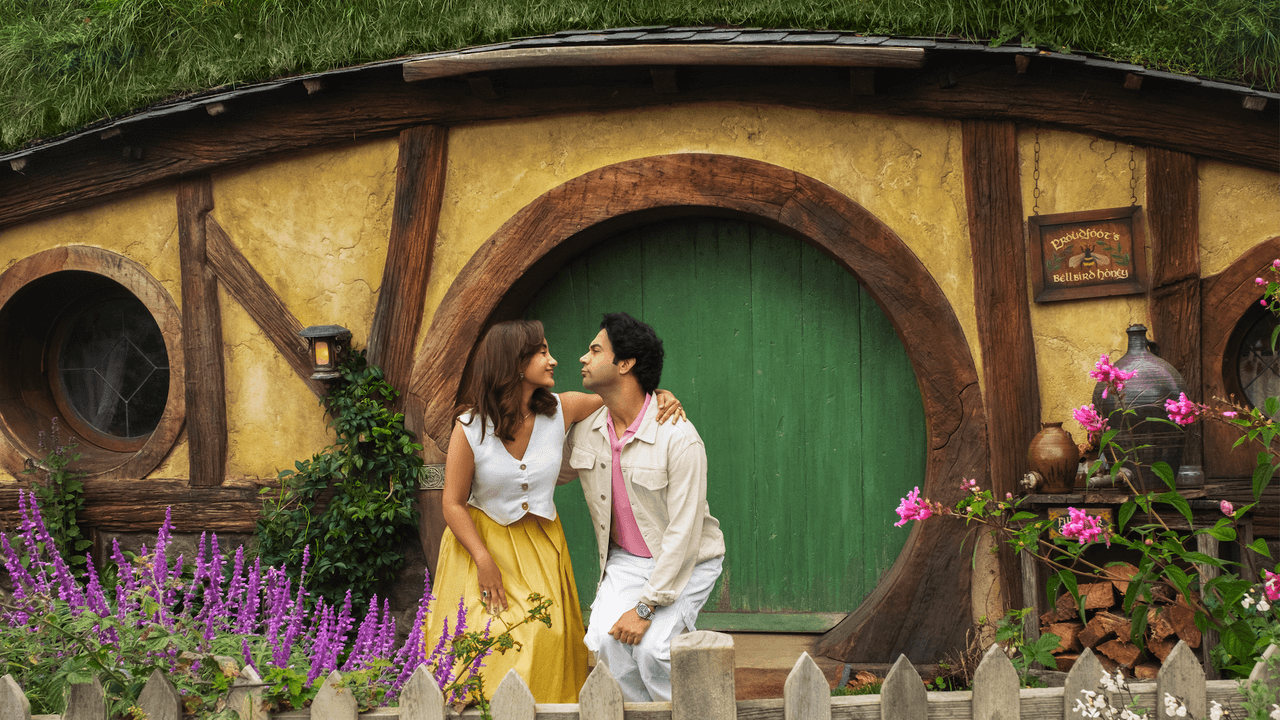Trip Planning
If your dream trip is still Europe, you’re stuck in these 6 outdated travel myths

I used to save screenshots of Santorini sunsets like they were prophecies. Blue domes, white walls, that specific shade of Aegean that makes you understand why the Greeks needed so many words for blue. My Pinterest board labeled “Someday” looked like every other millennial’s—a parade of Parisian cafés and Tuscan vineyards, Amsterdam canals and Barcelona basilicas.
Then I spent three weeks in Lombok, Indonesia, learning to surf from a guy named Wayan who’d never left his island but spoke four languages and could read ocean currents like sheet music. One night, sitting on the beach eating grilled corn and watching phosphorescence dance in the waves, I realized my European dream trip wasn’t actually mine. It was inherited, like my grandmother’s china—beautiful, valuable, but designed for someone else’s table.
The “civilization starts here” myth
Last month in Vientiane, I watched the morning alms ceremony—hundreds of monks in saffron robes collecting offerings in silence while the city held its breath. A French tourist next to me whispered about how “untouched” it all was, how “authentic.” I thought about the 14th-century stupas we’d passed, the Sanskrit inscriptions older than Notre Dame.
The myth goes like this: real culture lives in European museums and monuments. Everything else is either derivative or developing. It’s why we say “discovered” when Europeans showed up places where millions already lived. It’s why my high school history textbook devoted one chapter to “The Rest of the World.”
But spend a day at Angkor Wat watching sunrise paint thousand-year-old faces gold, or join the evening crowds at Borobudur in Java where Buddhist pilgrims have climbed stone steps for twelve centuries. Walk through Old Damascus where they’ve been making rose water the same way since before England had a name. Culture doesn’t radiate from a single source. It blooms wherever humans gather long enough to need beauty.
The convenience gospel
“But it’s just easier,” my coworker said, defending her fourth trip to Italy. “Everyone speaks English. The trains run on time. You know what you’re getting.”
Sure. And my neighborhood Chipotle is easier than the Salvadoran place where you have to point at what you want and hope. Ease is overrated.
I learned this trying to buy train tickets in rural Maharashtra, India. The booking office had closed early (cricket match), the online system required an Indian phone number, and the station master spoke a Hindi dialect Google Translate had never heard of. It took three hours, two cups of chai, and a crowd of increasingly invested strangers to get me on the right train. When I finally collapsed into my seat, an elderly woman opposite shared her tiffin lunch with me—okra curry, chapati still warm, pickled mango that made my eyes water.
The best travel stories start with “everything went wrong.” They’re born from the gap between what you planned and what actually happened. When you optimize for convenience, you optimize away the possibility of surprise. You get efficiency where you needed alchemy.
In Mongolia’s Gobi Desert, our jeep broke down between nowhere and nowhere else. We spent the night in a nomad family’s ger, learning to play sheep ankle bones while fermented mare’s milk got passed around. No TripAdvisor reviews. No WiFi. No common language beyond laughter and hand gestures. Also, no moment from my five trips to Europe that felt half as real.
The Instagram industrial complex
We all know this one, but knowing and doing occupy different continents. The cycle goes: see aspirational photo, save aspirational photo, recreate aspirational photo, post aspirational photo, perpetuate aspirational photo. What gets lost is the possibility that you might want something different than what photographs well.
I watched it happen at Fushimi Inari in Kyoto. Thousands of vermillion torii gates climbing a mountain—legitimately spectacular. Also: legitimate chaos. Everyone hunting for that one shot where it looks like you’re alone in a tunnel of sacred architecture. Meanwhile, if you turned left at the second shrine and climbed the unmarked path, you’d find smaller shrines where locals still leave offerings, where moss grows thick on stone foxes, where you can actually hear what silence sounds like in a sacred space.
The most-photographed places on earth are starting to look more like photo sets than destinations. Dubrovnik installed surveillance systems to monitor crowds and is implementing visitor restrictions. Iceland had to close Fjaðrárgljúfur canyon multiple times because Instagram tourism was literally loving it to death. When we travel for the image rather than the experience, we turn places into backdrops and ourselves into props.
The scarcity scam
“Europe’s not going anywhere,” I told my mom when she asked about my upcoming trip to Kyrgyzstan.
“But what if something happens?” she countered. “What if you can’t travel later?”
The anxiety is real but the logic is backwards. The Parthenon has survived 2,500 years—it’ll make it through your thirties. But languages disappear at a rate of one every two weeks. Whole islands are planning their evacuations. The last Sumatran rhinos struggle to find mates across fragmented forests.
This isn’t disaster tourism—it’s recognition that the world’s most irreplaceable experiences aren’t in climate-controlled museums. They’re in places where modernity arrives like a tide, transforming everything it touches. The throat singers in Tuva, the stilt villages in Brunei, the sea nomads of Myanmar who can see underwater—these aren’t tourist attractions. They’re ways of being human that won’t exist in a generation.
The comfort zone complex
“I just want to relax,” says everyone defending their beach resort choice. Fair. Modern life is exhausting. But here’s what I’ve noticed: the relaxation that comes from confirming what you already know fades faster than your tan. The energy that comes from having your assumptions scrambled? That stays.
In Tbilisi, I got spectacularly lost trying to find a wine bar and ended up at a family birthday party in someone’s garage. Three hours later, I knew four toasts in Georgian, had strong opinions about khachapuri styles, and understood why they call it the birthplace of wine. My nervous system was definitely activated. Also: I felt more alive than I had in months.
Comfort is overrated as a travel goal. You can be comfortable at home, probably more cheaply. What you can’t get at home is the specific disorientation of being the only person in a room who doesn’t understand the joke, followed by the specific joy of eventually getting it. You can’t get the muscle memory of navigating by landmarks instead of apps, or the pride of successfully ordering dinner using only gestures and goodwill.
The timeline myth
“First Europe,” the mental map goes. “Then maybe Southeast Asia. Save Africa and South America for when I’m more experienced.”
Experienced at what? Navigating metro systems? Reading Roman numerals? There’s no prerequisite course for curiosity. No correct order for wonder.
I met a 19-year-old from Denmark in Kigali who’d chosen Rwanda for her first solo trip. “Everyone said I was crazy,” she laughed, feeding banana to a baby gorilla at a conservation center. “But I figured if I could handle Copenhagen winters, I could handle anything.” She was planning to study sustainable agriculture, wanted to see Rwanda’s farming innovations firsthand. Made more sense than starting with the Eiffel Tower.
The idea that travel has a difficulty setting—with Europe on “easy” and everywhere else on “advanced”—is both condescending and limiting. It assumes the goal is smooth consumption rather than genuine exchange. It treats the majority of the world like the travel equivalent of post-game content.
What’s left when the myths fall away
Here’s what I’m not saying: skip Europe. I’m heading to Slovenia next month to hike the Julian Alps, and I’ll probably cry when I finally see the Northern Lights in Norway. Europe holds legitimate wonders, stories worth hearing, people worth meeting.
What I am saying: interrogate the reflex. When you picture your dream trip, whose dream are you dreaming? When you save for someday, what assumptions are you saving alongside the money?
Because here’s what waits beyond the myths: night markets in Luang Prabang where teenagers sell crafts to pay for university. Desert libraries in Mauritania where families guard manuscripts older than printing presses. Surf breaks in El Salvador where the civil war ended but the waves didn’t. Tea ceremonies in Kyoto where silence costs more than words.
The world is wider than your Pinterest board. Wider than the “safe” list your parents emailed. Wider than the places that look good in square format. Wide enough that you could spend your whole life traveling and never see the same sunset twice, never taste the same bread, never run out of strangers who become friends who become reasons to return.
Your dream trip is still valid. But maybe it’s time to dream in more colors.
Trip Planning
Audley Travel reintroduces Jamaica after three-year gap

Audley Travel has relaunched its programme to Jamaica three years after pulling out of the destination.
The tailor-made tour operator said it had reintroduced the country due to client demand for more Caribbean islands.
A sample itinerary to Jamaica includes a nine-day ‘Jamaica beach & rainforest escape’ with stays in Ocho Rios and Montego Bay. Other itineraries include a tour of Kingston and a visit to Dunn’s River Falls and The Blue Hole.
Audley has also expanded its programme in India, Japan and Tanzania.
New tours in India include a 15-night tailor-made itinerary, with stays in Delhi, Nimmu, Uleytopko, Nurla, Leh, Nubra Valley and two nights at the Drenmo Lodge. There’s also bear tracking in the valleys of Dras, where guests can stay in the Drenmo Lodge for the chance to see the Himalayan Brown Bear.
In Japan, Audley has added Nagoya in Aichi Prefecture, which can be included in a traditional Japanese itinerary to expand the Golden Route. A sample itinerary includes a 17-day trip with two nights in Nagoya as well as time in Tokyo and Kyoto.
The expanded Tanzania programme includes a 10-day itinerary with one night in Arusha, four nights for the Great Rift Valley Trek and two nights in Karatu.
Trip Planning
2027-28 Itineraries From National Geographic-Lindblad Expeditions

National Geographic-Lindblad Expeditions has revealed details of its first 2027-28 deployment, marking its return to the Oceania region.
National Geographic-Lindblad Expeditions’ 2027–28 season features voyages across seven continents, designed to connect travelers with wildlife, wild places and local communities in ways that are authentic, enriching and respectful. The season will see its return to the Oceania region after two years with the relaunch of several immersive itineraries on board the National Geographic Resolution, including the 11-day Pearls of the Pacific: The Society and Tuamotu Islands, and a return to Easter Island after four years with the 18-day Easter Island To Tahiti: Tales of The Pacific itinerary.
“Our 2027-28 deployment reflects everything our guests value about traveling with us: extraordinary access, thoughtful pacing and a deep respect for the environments and cultures we visit,” said Trey Byus, Chief Expedition Officer, Lindblad Expeditions, in a press release statement. “Every itinerary has been crafted with care—whether it’s a guest favorite or a returning route—to offer experiences that are not only awe-inspiring, but also positively impactful. We believe travel can be a powerful force for good, and through these voyages, we invite our guests to deepen their connection to the planet, support conservation and communities, and return home with a renewed sense of wonder and purpose.”
The brand will also return to Alaska in 2027-28, inviting guests to explore its snow-capped mountains, fjords and wildlife with additional departures of its eight-day Alaska’s Inside Passage, 11-day Voyage to the Great Bear Rainforest, and 14- and 15-day Treasures of the Inside Passage itineraries aboard National Geographic Quest and National Geographic Venture.
Additional departures will also be available on its 16-day Coastal Japan: Imperial Dynasties and Modern Culture itinerary, exploring Japan’s history, culture, and landscapes—from the storied castle towns of the Edo period to the shrines and merchant districts of the Meiji era.
Whether kayaking alongside icebergs in Antarctica, observing sea lions while snorkeling in Baja California, wandering through rainforests in Central America, or journeying where few travelers have before by sailing through the Northwest Passage, each voyage is designed to offer transformative experiences that deepen guests’ understanding of the world—and their place within it.
For more information, visit expeditions.com.
Trip Planning
Take inspiration from Rajkummar Rao and Patralekhaa’s trip to Aotearoa New Zealand

New Zealand lives and breathes kaitiakitanga, which translates to guardianship of the land. For a sustainable holiday, check into The Hotel Britomart–New Zealand’s first 5 Green Star hotel–or stroll through Brick Bay vineyard, known for its greening ethos and farm-to-table delicacies.
From donning a wizard’s hat to spinning on the water, laughing in a Hobbit™ Hole, or soaking in geothermal pools, the actors found joy in spontaneity. They even shared quiet villa breakfasts with a view of Lake Taupō. Beyond these experiences, the country offers a rare connection to verdant landscapes where trees have stood tall for hundreds of years. Up north, Sanctuary Mountain stands as one of the country’s largest ecological projects, while down south, Fiordland comes alive with the chatter of rare birds like the kea, weka, tūī, and bellbirds.
Rajkummar and Patralekhaa departed with stories, smiles, and soulful memories. Whether it was the warmth of Māori hospitality, the mist rising from hot springs, or the hush of a native forest, every memory felt earned and cherished.
The mini-series will be released in phases on newzealand.com/in and owned channels, with advertising campaigns going live across digital channels and social platforms. Watch the first episode of the mini-series here. Inspired to take a no-filter trip to Aotearoa New Zealand? Explore SOTC travel packages here and Thomas Cook packages here.
-

 Brand Stories2 weeks ago
Brand Stories2 weeks agoBloom Hotels: A Modern Vision of Hospitality Redefining Travel
-

 Brand Stories7 days ago
Brand Stories7 days agoCheQin.ai sets a new standard for hotel booking with its AI capabilities: empowering travellers to bargain, choose the best, and book with clarity.
-

 Destinations & Things To Do2 weeks ago
Destinations & Things To Do2 weeks agoUntouched Destinations: Stunning Hidden Gems You Must Visit
-

 Destinations & Things To Do6 days ago
Destinations & Things To Do6 days agoThis Hidden Beach in India Glows at Night-But Only in One Secret Season
-

 AI in Travel2 weeks ago
AI in Travel2 weeks agoAI Travel Revolution: Must-Have Guide to the Best Experience
-

 Brand Stories4 weeks ago
Brand Stories4 weeks agoVoice AI Startup ElevenLabs Plans to Add Hubs Around the World
-

 Brand Stories3 weeks ago
Brand Stories3 weeks agoHow Elon Musk’s rogue Grok chatbot became a cautionary AI tale
-

 Asia Travel Pulse4 weeks ago
Asia Travel Pulse4 weeks agoLooking For Adventure In Asia? Here Are 7 Epic Destinations You Need To Experience At Least Once – Zee News
-

 Brand Stories4 weeks ago
Brand Stories4 weeks agoChatGPT — the last of the great romantics
-

 AI in Travel4 weeks ago
AI in Travel4 weeks ago‘Will AI take my job?’ A trip to a Beijing fortune-telling bar to see what lies ahead | China

You must be logged in to post a comment Login